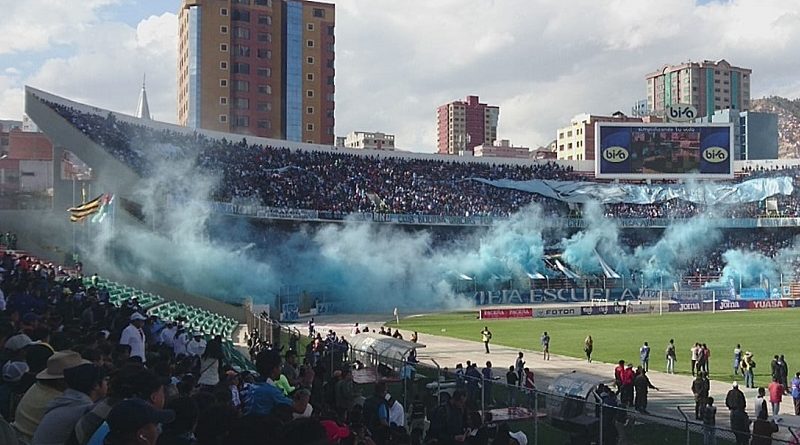Football Match Visit in South America: Our Bolivia and Brazil Experiences
In this special football travel guide, Paliparan editor-in-chief Koen and contributing author Carlo discuss how you can safely visit a local football match in South America, telling the tales of their own football experiences in Bolivia and Brazil.
Visiting a football match in South America
Football fans around Europe and wider world who also like to travel often have one specific bucket list item: visiting a match in South America.
There is just something special about football (that’s soccer for our US readers!) in South America. There are of course the football greats such as Pelé, Maradona, Valderrama and Cubillas whom we all know from their World Cup appearances throughout history. And then there are those epic football classics such as Boca Juniors vs River Plate in Argentina, Peñarol against Nacional in Uruguay and the Colo Colo – Universidad derby in Chile.
Who doesn’t dream to attend such matches in venues like Buenos Aires’ La Bombonera stadium? Or the Centennial stadium in Montevideo where the first ever FIFA World Cup was played? Yet the thoughts of standing in the stands between the colourful and slightly crazy hardcore fans also brings up lots of questions for those uninitiated. How do I score some tickets? What about personal safety?
Especially the last question is perfectly understandable given the often violent nature of hotly contested derbies, hooliganism and the relatively poor security record of many South American nations.
Paliparan editor-in-chief Koen and contributing author Carlo have both visited multiple matches on the continent and discuss these issues based on their own experiences. In particular, they recall their personal experience attending the Fluminense vs Grêmio match in Rio de Janerio’s Maracanã stadium and the great Bolivian Clásico between The Strongest and Club Bolivar at Estadio Hernando Siles in La Paz.

A high-altitude adventure
On a trip across the Andes, Carlo found out by sheer chance that the greatest of all Bolivian football matches was about to be played at the country’s biggest stadium: the La Paz city derby between The Strongest and Club Bolivar.
The venue of the match is the famous Estadio Hernando Siles, a 42,000-seat stadium located at an altitude of 3,637 metres (11,932 feet) above sea level, which makes it one of the highest professional football stadiums in the world.
It is also the stadium in which the Bolivian national team plays its matches, giving it a considerable home advantage as visiting teams – even the South American giants of Brazil and Argentina – always have difficulties with the thin air which leaves their players gasping for breath while the Bolivian players are perfectly accustomed to playing at high altitudes.
Bus journey
Carlo said: “I heard about the upcoming match from another tourist in a local bus. The match between The Strongest and Club Bolivar is not only the city derby of La Paz, but also the match between the two most successful clubs of the country.”
Being immediately interested in attending the derby, known as the Clásico Paceño or the La Paz Classic, Carlo immediately went out to buy match tickets.
He said: “The tickets were sold at multiple sale points. I believe I bought mine at a paper shop.”

Peaceful atmosphere
Not being easily intimidated, Carlo ended up visiting the match without taking any special precautions although he did keep a close eye at all time of his surroundings in case of sudden safety issues.
This however turned out to be completely unnecessary as to his surprise he saw fans of both sides mingle together before the match in the streets surrounding the stadium.
Carlo said: “It struck me that the whole vibe was so peaceful. Sure, the fans were excited and fired up before the match but it was perfectly safe as groups of Bolivar fans walked right alongside those supporting The Strongest. They were all very sociable.
“At one point a big group of The Strongest fans walked right through a blue mass of Bolivar supporters. There were drums, fireworks, chanting and clapping but all in a friendly manner. It was very impressive.”
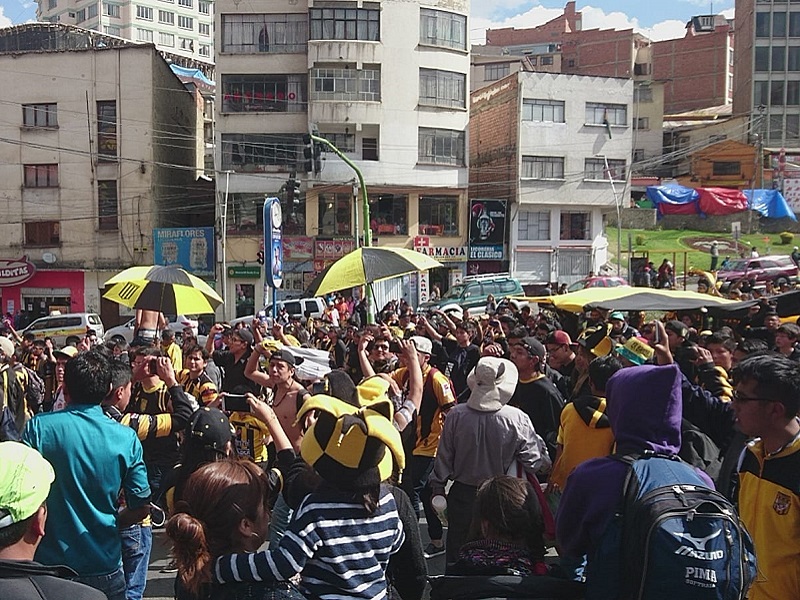

At the match
It was not much different at the match itself, where the atmosphere was “crazy and chaotic” but also entirely peaceful.
Carlo said: “Estadio Hernando Siles is located in a valley, so you have a great view not only of the pitch but also the gorgeous mountains surrounding the city. It is a beautiful football environment and as a tourist you are well-received by the local fans.
“The craziness continues during the match, with some beautiful choreography actions by both groups of fans as well as continuous music and chanting.”
The hectic atmosphere also showed itself in the countless of food and beverage sellers walking the stands.
Carlo added: “They drove me completely crazy. All those people walking right in front of you trying to sell you some beverages, ice cream or candies. They were obscuring my view, there were so many of them!”

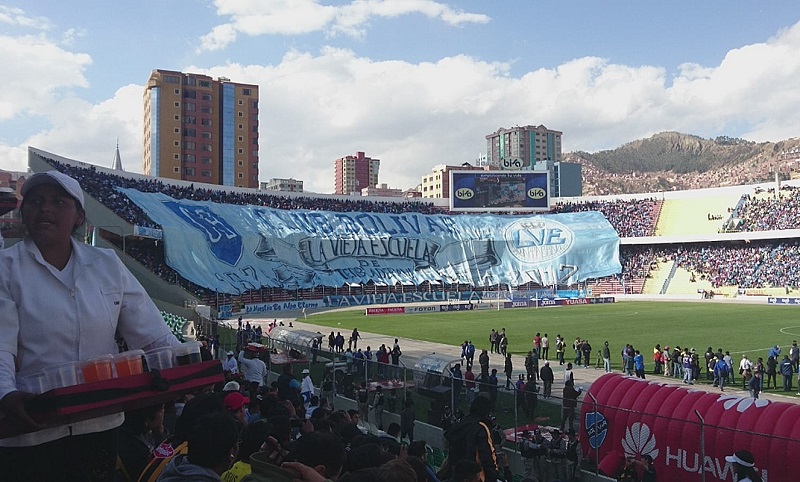
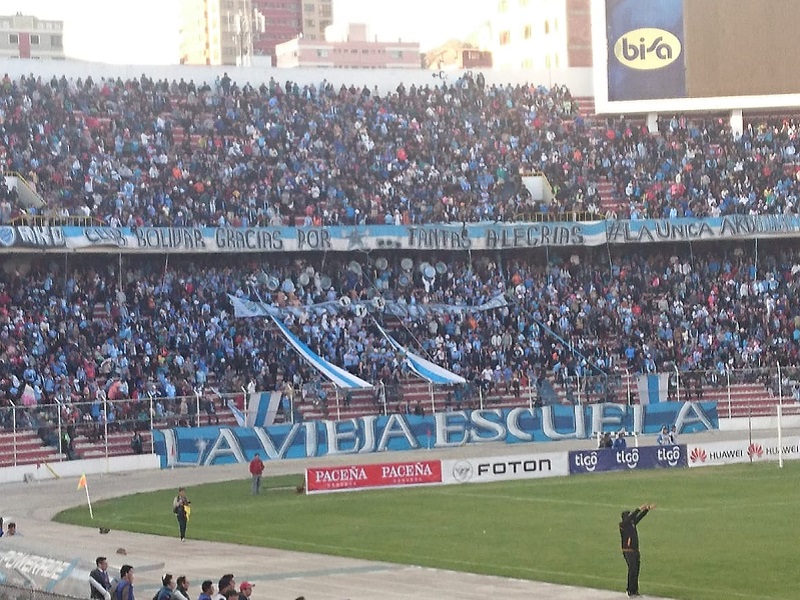
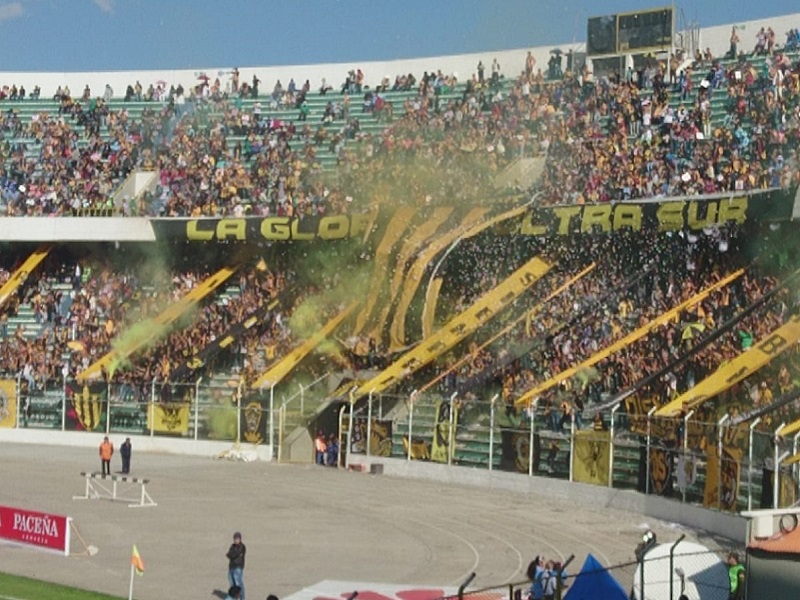
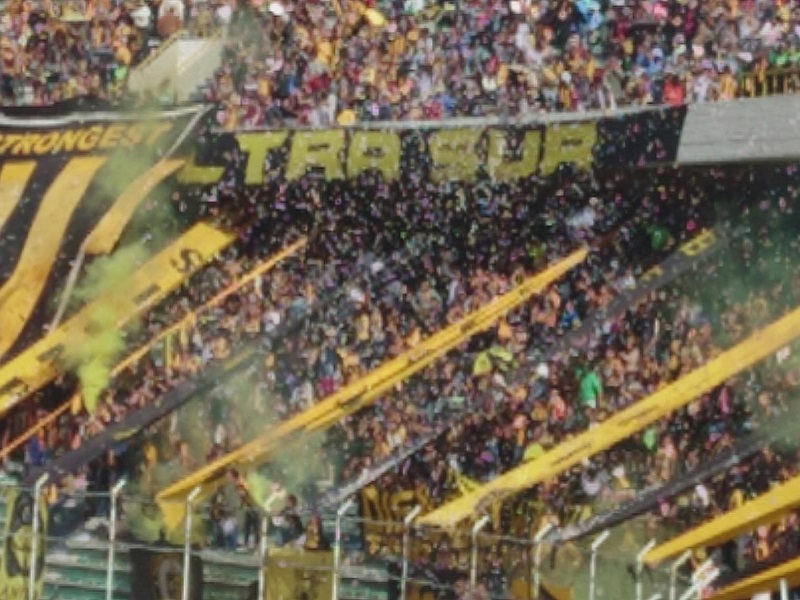
Bolivia
Although Carlo did enjoy his time at the La Paz football derby, he thought that the city in itself “was not really that special” and should be seen at most as a “starting point to explore Bolivia”.
He said: “It is the perfect base to see some local sights in the vicinity, for example the famous Death Road. The good transport links make La Paz the perfect starting point of any Bolivian itinerary.”


Crazy Cariocas
Paliparan editor-in-chief Koen has visited a top flight match in Brazil during his visit to Rio de Janeiro some 10 years ago. Already when he sat in the plane to Brazil did he contemplate visiting a local match in the famous Maracanã football temple to see for himself how crazy the matchday atmosphere would be among the football-loving Cariocas as the inhabitants of Rio are affectionately called.
Koen said: “Rio de Janeiro is home to four Brazilian football giants: Flamengo, Fluminense, Botafogo and Vasco da Gama. Chances were quite big that during my four-day stay in Rio, at least one of them would have a home game.”
Hostel
As it was his first time visiting South America, Koen decided to inquire at his hostel about visiting a football match.
Koen said: “Given the high crime rate in Rio and it being my first time in Brazil, I thought it would not be the smartest of ideas to just walk to a stadium ticket booth on matchday, buy a ticket, and sit between the home side ultras.
“Fortunately, the staff at the CabanaCopa hostel in which I stayed were highly knowledgeable and even organised football tours. For a small fee, they would buy the tickets and take us along to the Maracanã. Being among experienced locals who knew their way around the stadium neighbourhood felt like the safest option.”
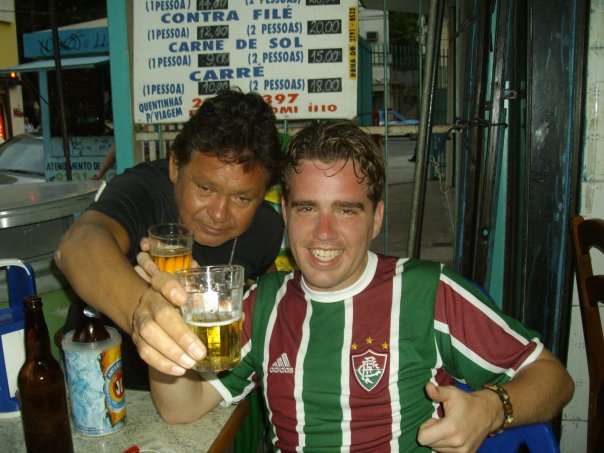
Fluminense
The match which Koen attended saw local outfit Fluminense play Grêmio at home in a regular season fixture in Brazil’s top league.
Koen said: “I was hoping that either Flamengo or Fluminense would play at home during my stay in Rio. Flamengo is the most popular team not only in Rio but in the entire of Brazil, while Fluminense is the city’s second favourite and one of the oldest and most traditional clubs of the country.”
Fluminense, nicknamed ‘Flu’ or ‘Tricolor’ after their famous red-white-and-green striped kits, won their last league title in 2012. Perhaps their best known player of all time is Roberto Rivellino, who brought Fluminense some success in the late 1970s and was one of the star players of the World Cup winning Brazilian team of 1970 alongside Pelé.
Pre-match atmosphere
Koen recalls being brought in a minivan along with other visiting tourists staying in different hostels to a pub not far from the stadium grounds.
He said: “Stadiums in Brazil are dry. No beer is sold during matches. Local fans thus tend to pre-drink a wee bit before the match with their fellow fans at one of the local pubs.”
Walking the final distance to the Maracanã, one of the most iconic stadiums in the world and venue of so many epic World Cup matches, was a truly special experience.
Koen said: “You don’t have to be football-mad to appreciate the immense cultural and historical significance of the Maracanã. This stadium is so famous in the world and rooted so deep in Brazil’s national psyche that it is hard not to get goosebumps when entering the massive stands.”
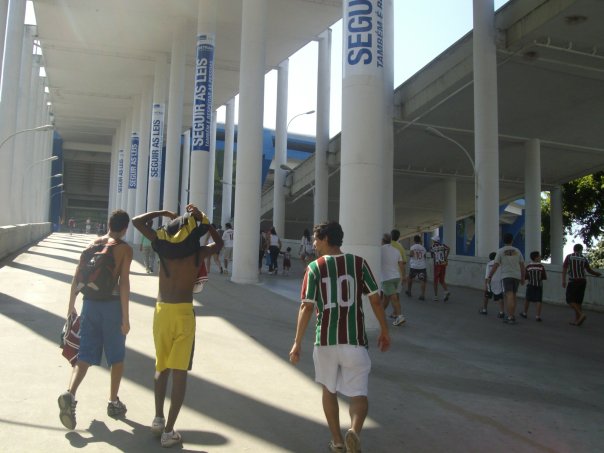
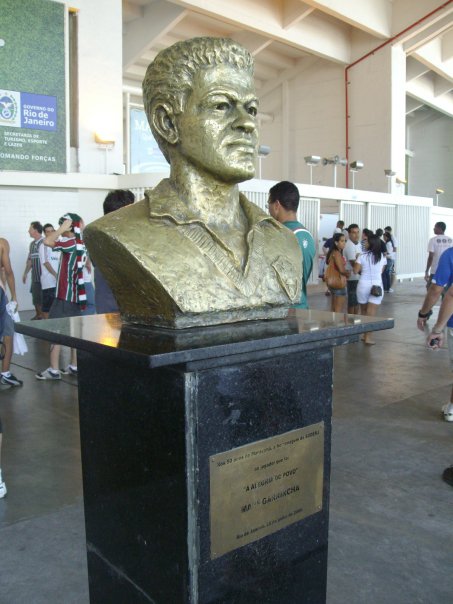
Torcida
The Maracanã is one of the largest stadiums in the world. On 16th July 1950 – one of the most infamous days in Brazilian sporting history – there was a record number of 199,854 in attendance watching Uruguay win the World Cup final in a shock 2-1 victory over Brazil, with legendary Uruguayan winger Alcides Ghiggia scoring the winning goal.
Today the capacity has been downgraded back to a still highly impressive 78,838, with the last renovation done just before the Rio Olympics in 2016.
Koen said: “It struck me how empty the stadium was during the match. Although the attendance was around 30,000 people, most of the stands were completely empty.
“However, one side of the stadium was completely full with Fluminense fans. Our seats were not too far from the ‘torcida’ – the informal group of hardcore Flu fans.”
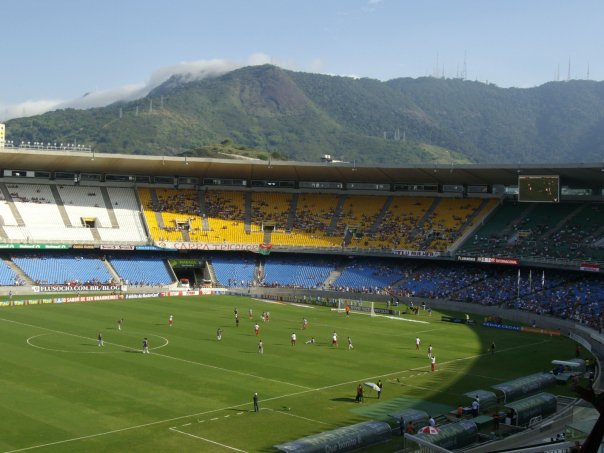
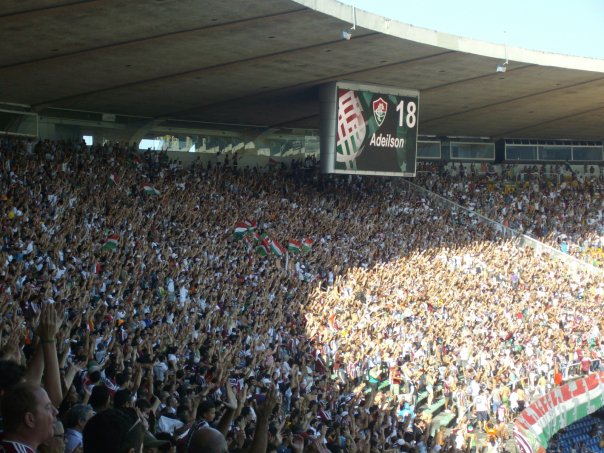

Avalanche of sound
Although there wasn’t any special pre-match choreography, the match atmosphere still impressed Koen.
He said: “The fact that some 30,000 Fluminense fans were gathered in one stand did still create a special atmosphere. The fans were singing and chanting throughout the entire match while waving their giant flags and banners. After each goal they also lit up some fireworks.
“There was definitely more action in the stands than on the pitch. Although the match ended in a 2-2 draw as far as I can remember, the football being played was dreadful, with nearly all goals coming out of personal mistakes. Samba football it was certainly not!”
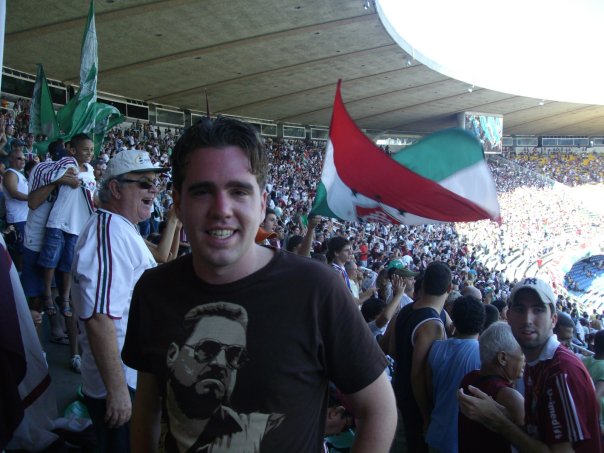

Rio vibes
Koen did not only enjoy watching a match at the Maracanã but ended up loving his entire Rio de Janeiro stay.
He said: “The city just has something magical. Whether it are the famous beaches of Copacabana and Ipanema, the village-like charm of the Santa Teresa neighbourhood or the views from Sugarloaf Mountain, Rio is just one the world’s most iconic cities and it is hard not to fall in love with it.
“The city and its people also have such a joyous vibe and mentality. It was basically sipping caipirinhas at Ipanema beach while listening to some Gets/Gilberto bossa nova songs during the day, and sipping more caipirinhas while partying and dancing with the locals to more modern Brazilian tunes at night.”

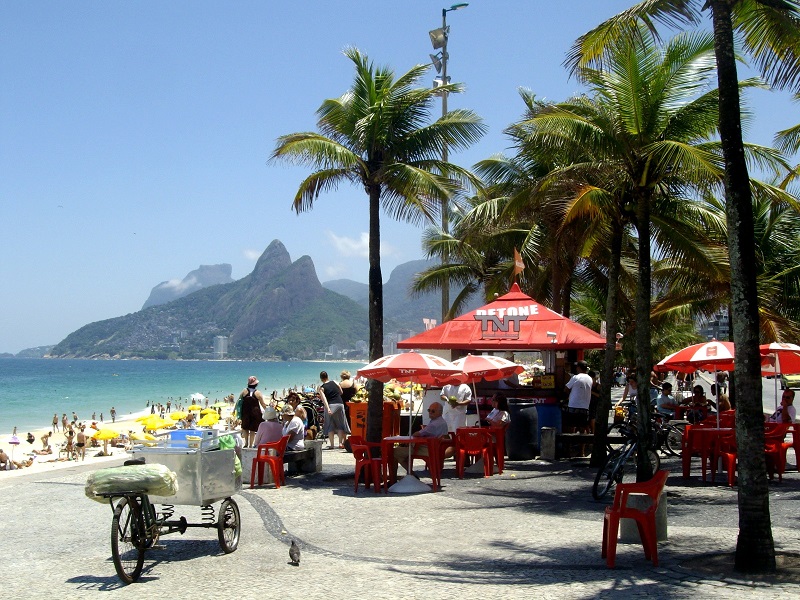

Tips and advice
Although their experiences were slightly different, Carlo and Koen did share some similar advice for those who also hope to visit a football match on their trip to South America. Some of their top tips are:
1. South America is a vast continent – and not any city, region or country is the same. Always win local advise tailored to the city in which you plan to visit a match. Someone’s experience in Rio de Janeiro is might not be applicable for the on-the-ground situation in São Paulo, Porto Alegre or Salvador!
2. Local safety and security situations can change over time – something which counts not only for attending football matches but for staying safe in general as well. Read in advance about your destination and preferably ask some trustworthy local people for advice. Hostel and hotel staff, as well as cafe and restaurant workers, are a great source of local information and advice. Always try to talk with some locals on the spot, as some stories on the internet or advice given by outsiders might be outdated or exaggerated.
3. Dress like a local. A football kit is not only a nice souvenir, but you will also not stand out in the crowd. The last thing you want is walking like a tourist with a baseball cap, rucksack and huge camera towards the stadium, which incidentally also makes you a much more likely target for pickpockets. If you must carry possessions with you, use a plastic supermarket bag. Valuables, including bank cards, should be left at your accommodation. Just bring enough cash money which is enough for the rest of the day.
4. Stay aware of your surroundings. There are two opposite situations which you want to avoid: being left alone and being caught in a violent crowd. Going with the flow of fans is usually the right way to go as you benefit from group protection. Stadiums might not always be located in the safest areas of town, but as long as you are not venturing out alone in some back alleys you will be safe. The exception to the rule is the angry mob. Don’t get caught up right in the middle of the hardcore groups of hooligans as in some South American countries such as Argentina and Brazil violence between rival groups is a thing, with injuries and even deaths not uncommon.
5. Connected to point four: don’t get drunk. Although drinking a beer or two is always a jolly good idea and part of the pre-match fun, getting drunk can seriously impede with your ability to stay aware of your surroundings and to assess potential risks.
In short
Whether you visit a match in South America on your own or as part of an organised tour, it is a special experience that definitely lives up to the hype. You don’t have to be a football lover to appreciate the sheer madness in South America’s football culture and how much pride the locals take in it.
In all cases, taking some ordinary precautions and using common sense makes attending a match a perfectly safe event. We cannot wait ourselves to return to the Americas to see another great derby! If you find yourself in any Latin American country, definitely check out the local football fixtures if there might be an upcoming match which fits in your schedule.
Read about other destinations!
In our trip report section, we have written multiple diary accounts of holidays across the world which can serve as an inspiration for your next trip. These trip reports are full of destination guides such as this article, as well as reviews of hotels, airlines and other modes of transport.
We also regularly publish amazing flight deals and special ticket sales, so make sure to regularly check the flight deals section on our website.
Or subscribe to our Facebook, Instagram or Twitter pages to receive instant updates!

